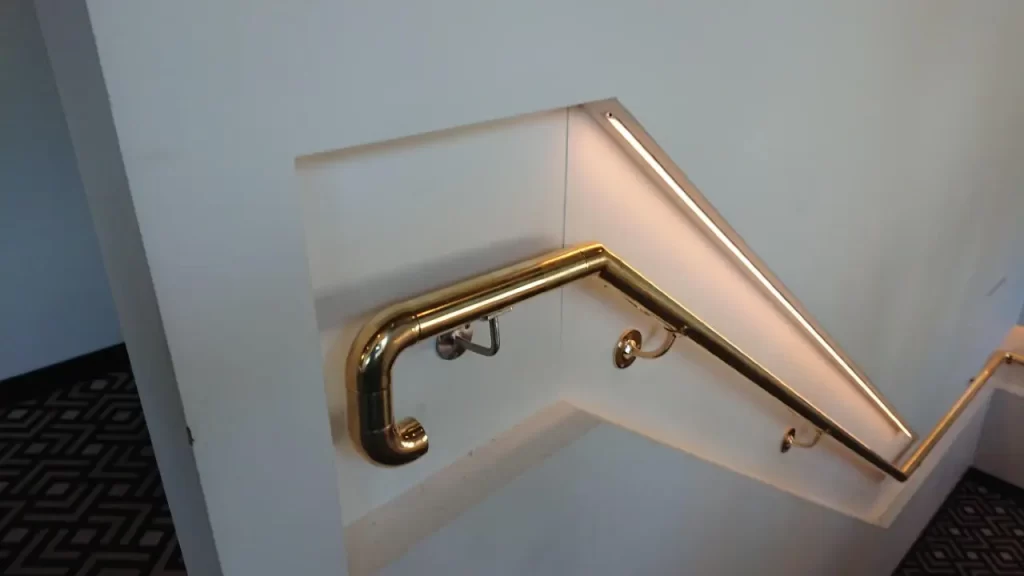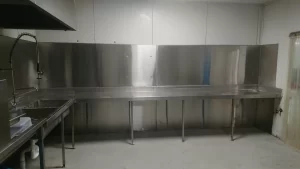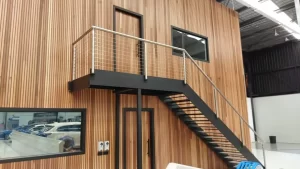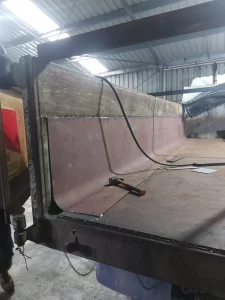Are you hoping to incorporate elegance and sophistication into your space? Brass handrails are a distinguished choice.
The brass welding equipment, designed with meticulous attention to detail, offer both functionality and an enhanced aesthetic to any setting. The cornerstone of this craftsmanship is our expertise in brass welding, a skill we’ve refined over the years.
Located in the heart of craftsmanship, we take pride in offering unparalleled brass welding services that transform your vision into tangible, beautiful handrails.
Join us, as one of top welding company in Gippsland we delve into the world of brass handrails and how brass welding plays a pivotal role in bringing these designs to life.
The Significance of Brass Handrails and Brass Welding in Today's Market.
In the evolving realm of interior and exterior design, brass handrails have carved a niche for themselves as symbols of luxury and elegance. Their ascent in popularity is deeply rooted in their inherent attributes and the craftsmanship that brings them to life.
Let’s dive deeper into the significance of both brass handrails and the art of brass welding:
• Unique Design:
Brass handrails are more than mere functional elements; they are a testament to art and design. Their radiant golden hue and polished finish set them distinctly apart from other materials.
• Superior Quality:
The durability of a handrail is a blend of its material and the craftsmanship that shapes it. Brass is renowned for its longevity and resistance to wear.
• Perfect Fit:
A common challenge with standard handrails is the compromise on fit and design. Custom-made brass handrails, tailored to precise dimensions, ensure a snug fit and seamless integration with the space’s architecture.
• Versatility:
Brass handrails, owing to their design and the flexibility of brass welding, can be adapted to various architectural styles.
Whether it’s a contemporary setting or a classic ambiance, brass handrails can be molded to augment the space’s aesthetic. This adaptability is a testament to their universal appeal.
Brass Handrails for Various Spaces
Spaces, whether personal or professional, are reflections of individual tastes and functional needs. Recognizing the distinctiveness of each space, we specialize in crafting brass handrails tailored to these nuances. Here’s a deeper exploration into the versatility of brass handrails for various settings:
Indoor Brass Handrails:
- Homes:
In residential settings, brass handrails can transform staircases, lofts, or mezzanines into focal points of elegance. Their warm hue complements a variety of interior palettes, adding a touch of luxury to living spaces.
- Offices:
Modern office designs often incorporate open spaces and multi-level areas. Brass handrails in such environments not only ensure safety but also infuse a sense of sophistication, making common areas, stairwells, or meeting spaces stand out.
- Commercial Spaces:
In malls, hotels, or other commercial establishments, brass handrails elevate the ambiance. They offer durability to withstand high footfall while maintaining their lustrous appeal, ensuring that the space remains inviting and stylish.
Outdoor Brass Handrails:
- Balconies:
A balcony is a personal retreat, and with brass handrails, it can be transformed into a luxurious extension of the indoor space. The resilience of brass ensures it withstands external elements, retaining its sheen season after season.
- Terraces:
For rooftop terraces or garden decks, brass handrails add a touch of opulence. Whether it’s a sunset view or a morning coffee spot, brass handrails enhance the experience, making it feel like a lavish escape.
- Garden Paths:
Winding garden paths or walkways adorned with brass handrails not only ensure safety but also elevate the garden’s aesthetic. Amidst greenery, the golden hue of brass creates a striking contrast, making every stroll memorable.
At Southeast Custom Welding, we are proud to offer both indoor and outdoor brass welding throughout Gippsland. Our team of skilled welders always provides quick and efficient solutions for you.

Techniques and Best Practices in Brass Welding
Brass welding, a specialized craft, requires a combination of the right techniques and best practices to ensure the final product is both aesthetically pleasing and structurally sound. Here are some of the primary techniques and safety measures associated with brass welding:
TIG Welding for Precision
Tungsten Inert Gas (TIG) welding, also known as Gas Tungsten Arc Welding (GTAW), is a process that uses a non-consumable tungsten electrode to produce the weld. It’s especially favored for its precision and control, making it ideal for intricate designs and thin brass sheets.
Well, if you want to know more about TIG welding, Arc welding, etc. This blog has a complete guide on welding and fabrication.
Advantages
- Precision:
TIG welding offers a high level of control, allowing for detailed and precise welds.
- Clean Welds:
With TIG welding, there’s minimal spatter, ensuring clean and smooth welds.
- Versatility:
Suitable for various metals, TIG is especially effective for brass due to its ability to prevent overheating and warping.
Brazing for Joining Brass Pieces
Unlike welding, which melts the base metal, brazing involves melting a filler metal to join two pieces together. The filler metal, when cooled, forms a strong, ductile bond between the brass pieces.
Advantages
- Lower Heat:
Brazing requires temperatures lower than the melting point of brass, reducing the risk of warping or damaging the base metal.
- Strong Joints:
Properly brazed joints can be as strong, if not stronger, than the metals they join.
- Aesthetic Appeal:
Brazing offers a smooth, clean joint, often with a silver or gold-like finish that complements the brass’s natural sheen.
Safety Precautions and Measures
- Protective Gear:
Always wear safety goggles, a welding helmet with the appropriate shade, flame-resistant gloves, and protective clothing to shield against sparks and molten metal.
- Ventilation:
Ensure adequate ventilation in the welding area to dissipate potentially harmful fumes and gases. Consider using exhaust fans or fume extraction systems.
- Fire Safety:
Keep a fire extinguisher nearby. Ensure the welding area is free from flammable materials, and always check the area for smoldering materials post-welding.
- Equipment Maintenance:
Regularly inspect welding equipment for wear and tear. Ensure all connections are secure, and replace damaged cables or parts promptly.
- Avoiding Electric Shock:
Dry your hands before welding, and insulate yourself from the workpiece and ground using dry insulation mats or platforms.
Maintenance and Care of Brass Handrails
Brass handrails, with their gleaming and sophisticated appearance, can be a centerpiece in any architectural design. However, like all metals, brass can be susceptible to tarnish, oxidation, and wear over time. Proper maintenance and care are essential to ensure that these handrails retain their luster and remain in optimal condition. Here’s a guide on how to maintain and care for brass handrails.
Cleaning and Polishing:
- Wipe regularly with a soft cloth to remove dust.
- For deeper cleaning, use mild soap and water.
- Use commercial brass polishes or natural solutions like lemon juice and baking soda for shine.
Tackling Tarnish and Oxidation:
- Remove tarnish with brass cleaner or a mix of salt, flour, and vinegar.
- Apply a protective lacquer or wax to prevent oxidation.
- Inspect periodically for greenish oxidation marks, especially in humid areas.
Professional Maintenance:
- Have a professional inspection annually.
- Seek expert restoration for extensive tarnishing or damage.
- Consider professional re-lacquering when the original protective layer wears off.
In addition, our expert team is well-versed in all aspects of general fabrication. Join us to craft solutions tailored to your fabrication needs.
Conclusion
Brass handrails, intricately shaped by the art of brass welding, epitomize both durability and timeless elegance.
Their versatility makes them apt for diverse spaces, from intimate home corners to bustling commercial zones. The precision of techniques like TIG welding and brazing ensures these handrails are not only visually appealing but also structurally robust.
Regular maintenance, from simple cleaning to professional inspections, guarantees their lasting sheen. In the evolving landscape of design, brass handrails, backed by expert welding, stand out as a blend of luxury and resilience, making them an unmatched architectural choice.





